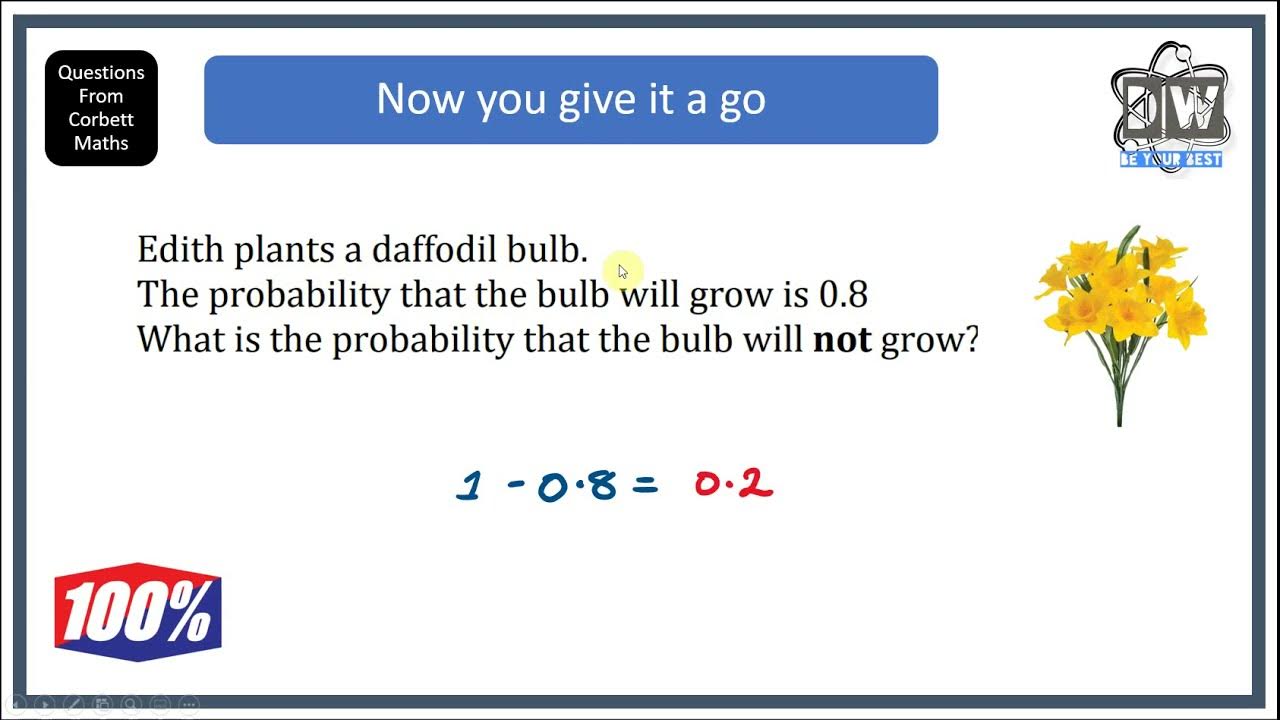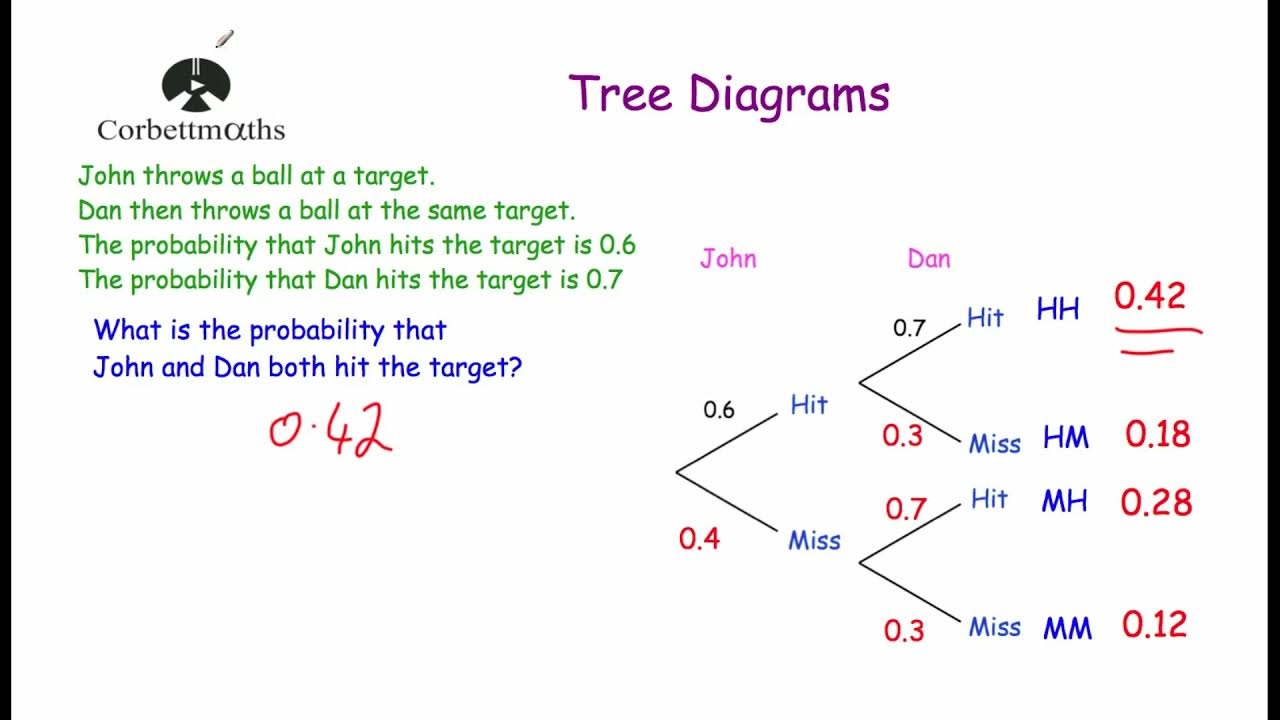PELUANG l DASAR TEORI PELUANG
Summary
TLDRThis educational video introduces the concept of probability, explaining it as the likelihood of an event occurring. It highlights that probabilities range from 0 (impossible) to 1 (certain) and illustrates this with examples involving a coin toss, a dice roll, and a deck of cards. Viewers learn how to calculate probabilities using the formula: favorable outcomes divided by total outcomes. Engaging and informative, the video encourages viewers to grasp the basics of probability while inviting them to like and subscribe for more content.
Takeaways
- 😀 The probability of an event can range from 0 (impossible) to 1 (certain).
- 😀 The probability of a cow flying is 0, as cows cannot fly.
- 😀 When rolling a die, the outcome will always be one of the six numbers (1-6).
- 😀 The probability of rolling a whole number on a die is 100%, as all outcomes are whole numbers.
- 😀 Probability (P) is defined as the number of ways an event can occur divided by the total number of possible outcomes.
- 😀 In a coin toss, the probability of getting heads (1 way) is 1/2 or 50%.
- 😀 The probability of getting tails in a coin toss is also 1/2 or 50%.
- 😀 When rolling a die, the probability of getting a specific number (e.g., 2) is 1/6.
- 😀 The probability of rolling an even number (2, 4, or 6) on a die is 3/6 or 50%.
- 😀 In a standard deck of 52 playing cards, the probability of drawing an Ace (4 Aces in total) is 4/52.
Q & A
What is the probability of a cow being able to fly?
-The probability of a cow being able to fly is zero, as cows cannot fly.
What is the probability of rolling a whole number on a die?
-The probability of rolling a whole number on a die is 1, or 100%, because all possible outcomes (1 to 6) are whole numbers.
How is probability defined mathematically?
-Probability is defined as the number of favorable outcomes divided by the total number of possible outcomes.
In a coin toss, what is the probability of getting heads?
-The probability of getting heads in a coin toss is 1/2, or 50%, since there are two possible outcomes: heads or tails.
What is the probability of rolling a 2 on a six-sided die?
-The probability of rolling a 2 on a six-sided die is 1/6, as there is one favorable outcome (rolling a 2) out of six possible outcomes.
How many even numbers are there on a six-sided die?
-There are three even numbers on a six-sided die: 2, 4, and 6.
What is the probability of rolling an even number on a die?
-The probability of rolling an even number on a die is 3/6, which simplifies to 1/2 or 50%, because there are three even numbers out of six total outcomes.
How many Aces are in a standard deck of 52 playing cards?
-There are four Aces in a standard deck of 52 playing cards.
What is the probability of drawing an Ace from a standard deck of cards?
-The probability of drawing an Ace from a standard deck of 52 cards is 4/52, which simplifies to 1/13.
What does a probability of 0 indicate?
-A probability of 0 indicates that an event is impossible and will not occur.
What does a probability of 1 indicate?
-A probability of 1 indicates that an event is certain to occur.
Outlines

This section is available to paid users only. Please upgrade to access this part.
Upgrade NowMindmap

This section is available to paid users only. Please upgrade to access this part.
Upgrade NowKeywords

This section is available to paid users only. Please upgrade to access this part.
Upgrade NowHighlights

This section is available to paid users only. Please upgrade to access this part.
Upgrade NowTranscripts

This section is available to paid users only. Please upgrade to access this part.
Upgrade NowBrowse More Related Video

Probability Concepts for Data Analysis and Data Science | Statistics for Data Science

PELUANG Part 1 - PENGENALAN DAN MANFAAT PELUANG

Introduction to Probability, Basic Overview - Sample Space, & Tree Diagrams

Probability (Event Not Happening)

Tree Diagrams - Corbettmaths

Probability, Sample Spaces, and the Complement Rule (6.1)
5.0 / 5 (0 votes)